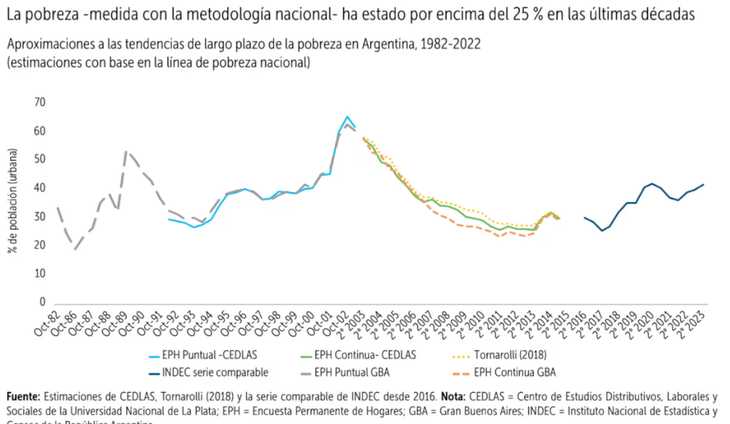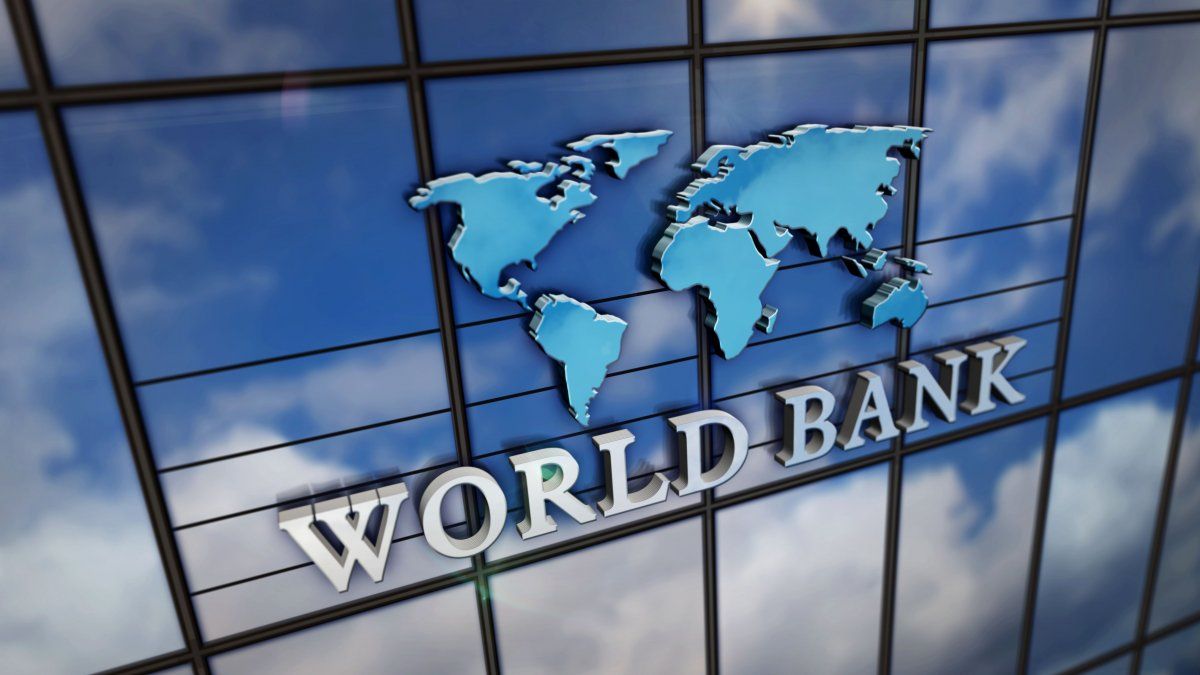A report of World Bank identified the factors that make it difficult to lower the percentage of povertyin the Argentinawhich reached 52.9% in the first half of 2024 and affected almost 25 million of people. In the work titled The Traps of Poverty in Argentinathe international organization showed four factors that prevent millions of Argentines from leaving a situation of vulnerability.
“Argentina presents the paradoxical case of a persistence of poverty even though it has good programs and public policies aimed at reducing it,” indicated Lourdes Rodríguez Chamussy, senior economist at the World Bank. It is the only country in the region that registered an increase in poverty between 2012 and 2022. The report highlighted that in the last four decades poverty did not fall below a 25% floordespite registering moments of economic growth.
According to INDEC, poverty affected 52.9% of people in the first half of 2024 and the level of indigence arrived at 18.1%.
According to the World Bank measurement, the international poverty line is located in income of u$s6.85 per day (2017 purchasing power parity). According to this calculation methodology, Poverty in Argentina remains low for the region, but went from 8.6% to 10.9% between 2012 and 2022.
“In Argentina, the effects of the pandemic added to those of the economic crisis deepened the deterioration of a situation that had already been negative since 2018. In 2020, the country reached its highest poverty level in more than a decade, 15.4 % according to measurement with the international poverty line,” highlighted the international organization.
The study stated that the contraction of labor income -from 64% to 58%- explained the 60% of the increase in the poverty rate between 2016 and 2023. Meanwhile, public transfers increased from 19% to 27% in the same period. “The policy responses implemented have not been able to respond to the structural determinants that limit income generation, but have instead fallen prey to ‘traps’ that have different manifestations,” they maintained.
This deterioration in social conditions and growth in poverty is explained, according to the World Bank, by “four traps” that are interconnected.
Poverty
For the World Bank, one of the key factors of structural poverty in Argentina is the loss of income
The “four traps” of poverty in Argentina, according to the World Bank
The report The Traps of Poverty in Argentina carried out by the World Bank analyzes four key factors that prevent the country from emerging from a situation of economic vulnerability.
The first question is the inflation and the fiscal imbalance. The constant increase in prices erodes the purchasing power of wages especially in the informal sector and low-income households.
“The contraction of labor income explains the 60% of the increase in the poverty rate between 2016 and 2023″, the organization maintains. For the second half of 2023, World Bank estimates show that The AUH achieves a reduction effect in the poverty rate of 3% and achieve a reduction of almost 30% in the homelessness rate.
The second “trap” that the organization mentions is the “intergenerational and geographic imbalances”, since poverty is highest among children and adolescents. The World Bank indicates that this, added to the fact that social spending is mainly aimed at the elderly population, translates into chronic poverty and lack of social mobility.
Screenshot 2024-10-22 085454.png

The first issue is inflation and fiscal imbalance, according to the World Bank
The third factor is the labor informalityfor which a large part of the population works in the informal sector, without contracts or social benefits, in precarious and poorly paid jobs. “For the poorest, labor income went from contributing 64% of total income in 2016 to 58% in 2023,” the report noted.
The last determinant of poverty in Argentina is impact of climate change. “Extreme climate events, such as droughts and floods, disproportionately affect the most vulnerable populations,” the report noted.
At the close of the study, the World Bank recommended: “The fundamental axis of a poverty reduction strategy in Argentina involves promoting a sustainable and inclusive growth that allows strengthening the income generation capacity of households. A key starting point is macroeconomic stabilization and emphasis on reducing inflation.”
Source: Ambito




